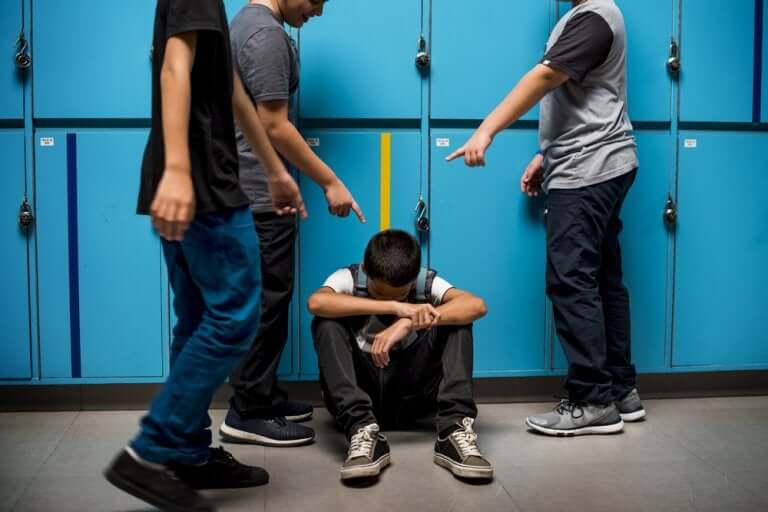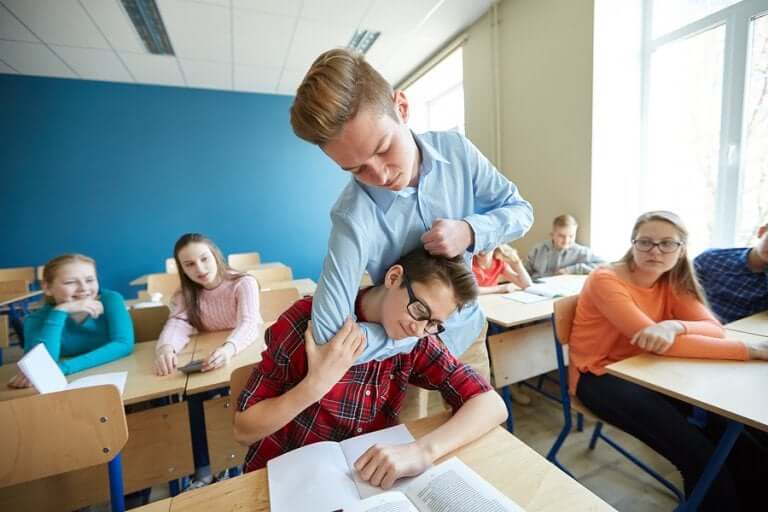An Ecological Approach Against Bullying

Bullying isn’t only an educational problem, but it’s also a social one. Because of that, we must take measures using an ecological approach against bullying.
All the areas and environments where a child grows up and develops should be included in this approach. This is because each different area can play its part to solve the problem of bullying in school.
A child’s right not to be bullied
According to the Convention on the Rights of the Child (CRC), approved by the United Nations General Assembly on November 20, 1989, children have a number of rights that states must guarantee.
One of these rights, defined in article 19 of the CRC, is to protect their physical and personal integrity from all forms of violence and ill-treatment.
One of the areas where we should protect our children is at school or in other educational establishments, as there are many students who are currently exposed to violence in school.
We shouldn’t tolerate this, and must do everything possible to prevent it. All children should have the right to receive quality education in a safe and welcoming environment.

The fact is that the education system has a privileged position which it can use to solve the problem of bullying. It’s well placed to provide students and their families with the knowledge and skills they need to communicate, negotiate, and then resolve conflicts in a constructive and positive manner.
“Always remember that you not only have the right to be an individual, but you also have the obligation to be one.”
– Eleanor Roosevelt –
The ecological approach against bullying
To deal with bullying, the Bronfenbrenner Ecological Systems Theory is a very useful tool. This theory describes a human being’s development as the interaction between biological qualities and relationships with different environments. These are the five different systems that the theory highlights:
- Microsystem
- Mesosystem
- Exosystem
- Macrosystem
- Chronosystem
These systems can be applied to children’s lives, as described below:
Microsystem
This refers to the closest and immediate surroundings of the child. It’s made up, firstly, of the family as their closest environment. However, it also includes the school (classroom, teachers and classmates) and friendship groups.
Mesosystem
This is the relationship established by the most immediate or closest environments to the child. In this case we have the relationship between the family environment and the educational system. We can also add to that the link between these two environments and the social and health context.
Exosystem
This covers the social contexts the child has a psychological relationship with, but not a physical one. In the case of the bullying phenomenon, both the laws that defend Human Rights, and the media that highlight the serious problem of bullying, favor the development of children.

Macrosystem
This refers to the cultural beliefs, political ideologies, and religions that the child has a relationship with. In some cases, these are areas that are ripe for discrimination and bullying.
Chronosystem
This is the historical context that a society as a whole develops in. In this case, it refers to the culture that the child grows up and develops in.
“Culture is also education, and only with it can you get out of this crisis of morals and values.”
– Use Lahoz –
The importance of the ecological approach against bullying
The ecological approach against bullying is an important tool. If these environmental systems can help to prevent bullying, then we can guarantee a greater effectiveness in the measures taken.
Therefore, the educational centers that apply anti-bullying strategies must comply with an education model that facilitates interaction between the different contexts the students grow up in.
“Education is the most powerful weapon you can use to change the world.”
– Nelson Mandela –
Bullying isn’t only an educational problem, but it’s also a social one. Because of that, we must take measures using an ecological approach against bullying.
All the areas and environments where a child grows up and develops should be included in this approach. This is because each different area can play its part to solve the problem of bullying in school.
A child’s right not to be bullied
According to the Convention on the Rights of the Child (CRC), approved by the United Nations General Assembly on November 20, 1989, children have a number of rights that states must guarantee.
One of these rights, defined in article 19 of the CRC, is to protect their physical and personal integrity from all forms of violence and ill-treatment.
One of the areas where we should protect our children is at school or in other educational establishments, as there are many students who are currently exposed to violence in school.
We shouldn’t tolerate this, and must do everything possible to prevent it. All children should have the right to receive quality education in a safe and welcoming environment.

The fact is that the education system has a privileged position which it can use to solve the problem of bullying. It’s well placed to provide students and their families with the knowledge and skills they need to communicate, negotiate, and then resolve conflicts in a constructive and positive manner.
“Always remember that you not only have the right to be an individual, but you also have the obligation to be one.”
– Eleanor Roosevelt –
The ecological approach against bullying
To deal with bullying, the Bronfenbrenner Ecological Systems Theory is a very useful tool. This theory describes a human being’s development as the interaction between biological qualities and relationships with different environments. These are the five different systems that the theory highlights:
- Microsystem
- Mesosystem
- Exosystem
- Macrosystem
- Chronosystem
These systems can be applied to children’s lives, as described below:
Microsystem
This refers to the closest and immediate surroundings of the child. It’s made up, firstly, of the family as their closest environment. However, it also includes the school (classroom, teachers and classmates) and friendship groups.
Mesosystem
This is the relationship established by the most immediate or closest environments to the child. In this case we have the relationship between the family environment and the educational system. We can also add to that the link between these two environments and the social and health context.
Exosystem
This covers the social contexts the child has a psychological relationship with, but not a physical one. In the case of the bullying phenomenon, both the laws that defend Human Rights, and the media that highlight the serious problem of bullying, favor the development of children.

Macrosystem
This refers to the cultural beliefs, political ideologies, and religions that the child has a relationship with. In some cases, these are areas that are ripe for discrimination and bullying.
Chronosystem
This is the historical context that a society as a whole develops in. In this case, it refers to the culture that the child grows up and develops in.
“Culture is also education, and only with it can you get out of this crisis of morals and values.”
– Use Lahoz –
The importance of the ecological approach against bullying
The ecological approach against bullying is an important tool. If these environmental systems can help to prevent bullying, then we can guarantee a greater effectiveness in the measures taken.
Therefore, the educational centers that apply anti-bullying strategies must comply with an education model that facilitates interaction between the different contexts the students grow up in.
“Education is the most powerful weapon you can use to change the world.”
– Nelson Mandela –
All cited sources were thoroughly reviewed by our team to ensure their quality, reliability, currency, and validity. The bibliography of this article was considered reliable and of academic or scientific accuracy.
- Bronfenbrenner, U. (1977). Toward an experimental ecology of human development. American psychologist, 32(7), 513.
- Galende, I. (2017). II Jornada sobre Audición y Lenguaje: Todos iguales todos diferentes.
This text is provided for informational purposes only and does not replace consultation with a professional. If in doubt, consult your specialist.








